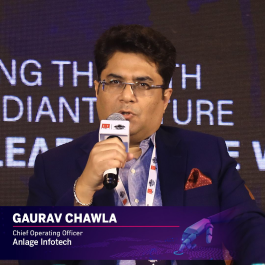

What if India is no longer just the world’s back office—but its strategic brain?
That’s the quiet revolution underway in the global delivery landscape.
India has long been the cornerstone of the global delivery model—a strategy wherein multinational corporations leverage geographically distributed teams to optimize cost, scale, and productivity. But today, this model is undergoing a profound transformation. As client demands evolve and digital disruptions accelerate, India’s role in delivering cutting-edge services has shifted from being just a cost arbitrage destination to an innovation and value-creation hub.
In this article, we explore 7 innovations that are reshaping the global delivery model in India, transforming the way companies think about outsourcing, captive setups, and offshore delivery. From AI and automation to new engagement models like Build-Operate-Transfer, these changes are driving agility, resilience, and strategic differentiation for global corporations.
The era of manual resume screening and gut-feel hiring is fading fast. Today, AI recruitment tools are transforming how talent is sourced, evaluated, and onboarded—particularly within India’s delivery centers.
Companies operating within the global delivery model are increasingly relying on machine learning algorithms and natural language processing to scan millions of profiles, rank candidates based on fitment scores, and even conduct preliminary interviews. This has significantly improved time-to-hire, reduced hiring bias, and ensured talent alignment with project needs.
For organizations scaling rapidly, especially Global Capability Centers, AI-led hiring enables leaner HR teams to support aggressive growth targets without compromising on quality or compliance.
The Build-Operate-Transfer (BOT) model is no longer just a buzzword—it has become a preferred strategy for companies looking to establish a long-term presence in India without the early overhead of direct operations.
Under this model, a local partner helps a global enterprise build a dedicated offshore team, operate it under stringent SLAs and governance, and then transfer full control once the setup is stable and optimized.
This strategy aligns beautifully with the global delivery model, allowing companies to test the waters, build domain-specific capabilities, and gain full control at the right time. For mid-sized firms or fast-scaling startups, BOT ensures speed without sacrificing strategic control.
As per a recent Deloitte insight into global outsourcing trends, approximately 35% of organizations have now adopted the BOT model—a clear sign that businesses value this model for its ability to scale capabilities while maintaining long-term operational control.
Gone are the days when India’s role in the global delivery model was limited to low-value tasks like data entry, tech support, or backend processing. Today, India is emerging as a strategic innovation partner, contributing to product development, digital transformation, and customer experience design.
Many firms now treat their Indian centers as co-creation labs—building next-gen AI platforms, piloting fintech solutions, or driving data science projects. These shared services setups are tightly integrated with global teams and are evaluated on outcome-based metrics, not just cost savings.
This shift has also led to the rise of captive units—fully owned Indian operations where IP, R&D, and core business functions are housed, often playing a mission-critical role in the company’s global strategy.
As companies increasingly adopt the global delivery model, there is a greater need for structured GCC solutions that reduce setup time, regulatory friction, and operational risk. From real estate and hiring to tax compliance and cybersecurity, vendors now offer full-stack support to launch and scale Global Capability Centers in India.
These solutions are pre-designed to meet local regulations (such as SEZ, STPI, labor laws, and MSME norms), ensuring companies can go live in under 90 days. Additionally, the integration of digital tools—like automated payroll, compliance dashboards, and AI-based hiring platforms—ensures transparency, control, and scalability.
Shared services in India have evolved from transactional support centers to sophisticated digital delivery hubs. Functions like finance, HR, legal, procurement, and IT are now deeply automated and analytics-driven, offering global stakeholders real-time insights and outcomes.
The global delivery model increasingly treats these shared services as strategic enablers—centralizing capabilities in India not just for cost reasons, but to leverage India's deep talent pool, time zone advantage, and digital dexterity.
Organizations are also adopting cross-functional delivery pods—blending ops, tech, and analytics under one umbrella to improve agility and cross-collaboration across business units.
A compelling data point from Deloitte’s recent survey reinforces India’s strategic position: approximately 50% of organizations developing next-gen digital capabilities have established GBS (shared services) centers in India. This statistic underscores India’s dominant role in empowering digital-first, scalable shared services—a cornerstone of the global delivery model.
The global delivery model’s success hinges on India’s ability to produce and retain high-quality talent at scale. But today, the emphasis has shifted from quantity to quality + adaptability. Modern Talent Solutions providers are not just staffing vendors—they are strategic partners enabling capability building.
Programs now focus on upskilling in areas like AI/ML, DevOps, cybersecurity, and digital product design. Internal mobility, mentorship networks, and continuous learning paths are embedded into delivery ecosystems. Forward-thinking GCCs also partner with academic institutions and edtech platforms to curate bespoke skill pipelines aligned with their roadmap.
The pandemic redefined the factors of globalization that underpin the global delivery model. Supply chain disruptions, geopolitical tensions, and a global shift toward remote work have changed how companies structure their offshore strategies.
India emerged stronger from this reset—thanks to digital infrastructure maturity, robust compliance frameworks, and a resilient workforce. Companies now increasingly prioritize business continuity, risk mitigation, and distributed talent access over just labor arbitrage.
The global delivery model is also being regionalized. While India remains the core hub, companies are now building satellite centers in tier-2 Indian cities, Eastern Europe, Latin America, and Southeast Asia to diversify risk and access niche talent.
As the global economy navigates uncertainty and disruption, India’s role in the global delivery model is becoming more strategic than ever. What started as a cost-saving measure has evolved into a high-impact, innovation-driven engine for global enterprises.
From leveraging AI in recruitment to adopting flexible BOT models, from designing integrated shared services to launching compliant and agile captive units, India is not just part of the global value chain—it’s helping redefine it.
The future will belong to delivery models that are not only global but also smart, resilient, and scalable. With a forward-looking mindset, deep capabilities, and a growing ecosystem of partners, India is poised to lead this transformation—and help every global corporation execute faster, scale wider, and innovate deeper.
The global delivery model is no longer a one-size-fits-all approach. It is being tailored, optimized, and intelligently restructured to reflect new economic realities and tech advancements. For global businesses—especially those investing in Global Capability Centers—India offers not just operational leverage, but strategic edge.
Whether you’re a Fortune 500 enterprise, a fast-growing SaaS startup, or a global corporation building your digital backbone, keeping an eye on these seven innovations is crucial. The companies that embrace them will not only survive disruption—they will lead it.
At Anlage, we specialize in end-to-end GCC solutions, from location strategy and talent acquisition to compliance, infrastructure, and operational acceleration. If you're exploring how to launch, scale, or transform your presence in India under a modern global delivery model, we’re here to help.
Contact us to explore how we can support your global expansion with precision, agility, and impact.

Gaurav Chawla, COO of Anlage Infotech, emphasized the transformative role of AI-powered analytics in HR at the 5th Edition of the GCC Summit 2024. Highlighting predictive analysis and smart tool utilization, he shared how these technologies can cut hiring cycle times by up to 60%, driving greater efficiency. The event took place at GMR Aerocity Hyderabad.
READ MORE